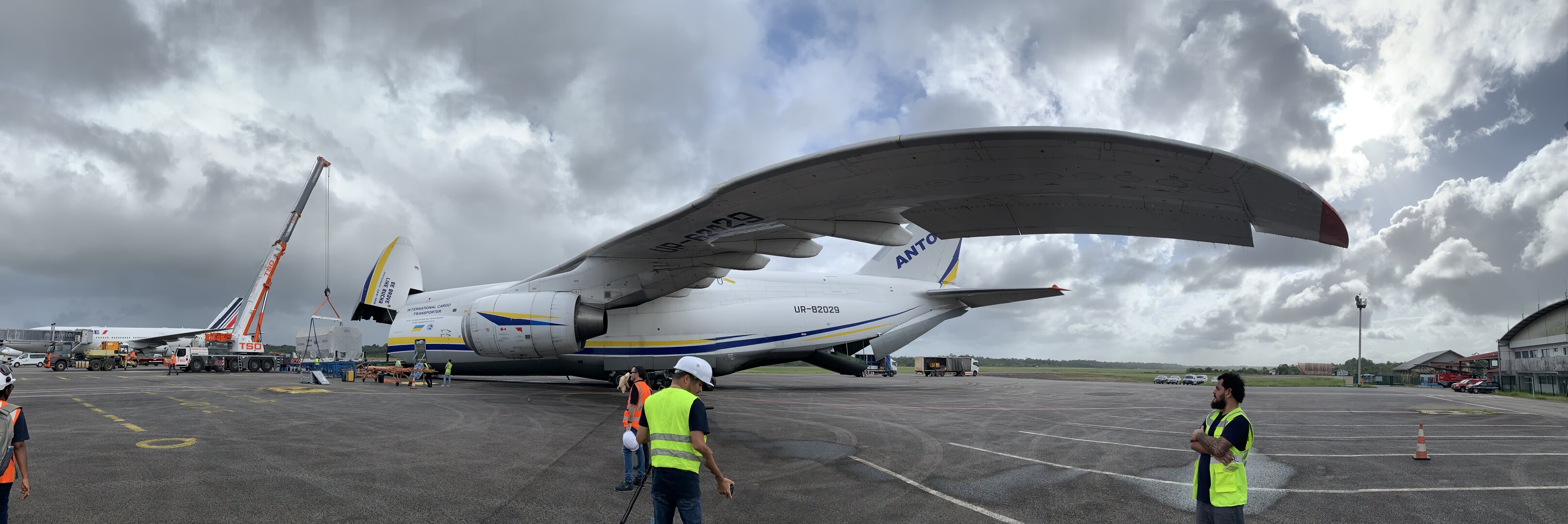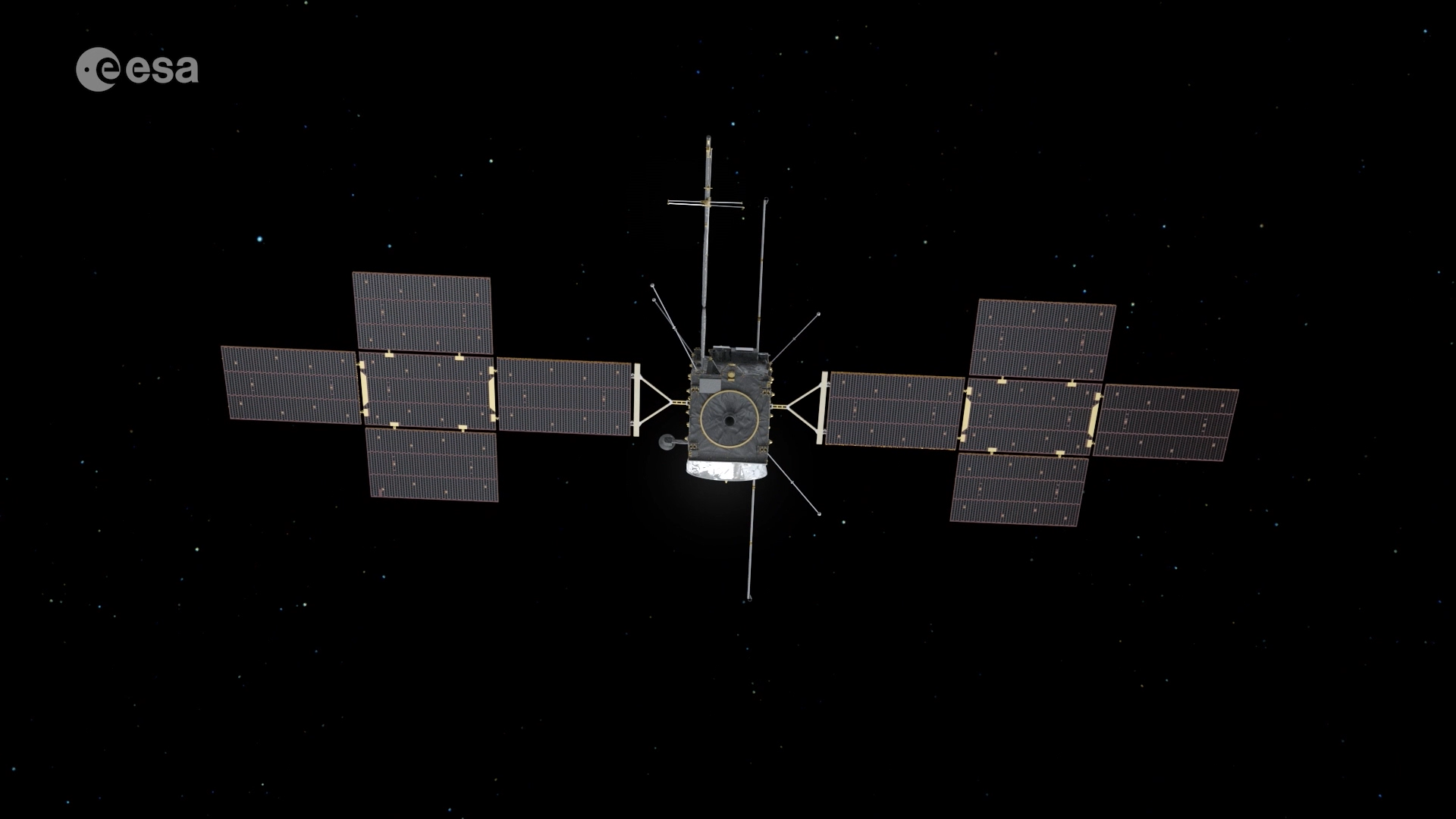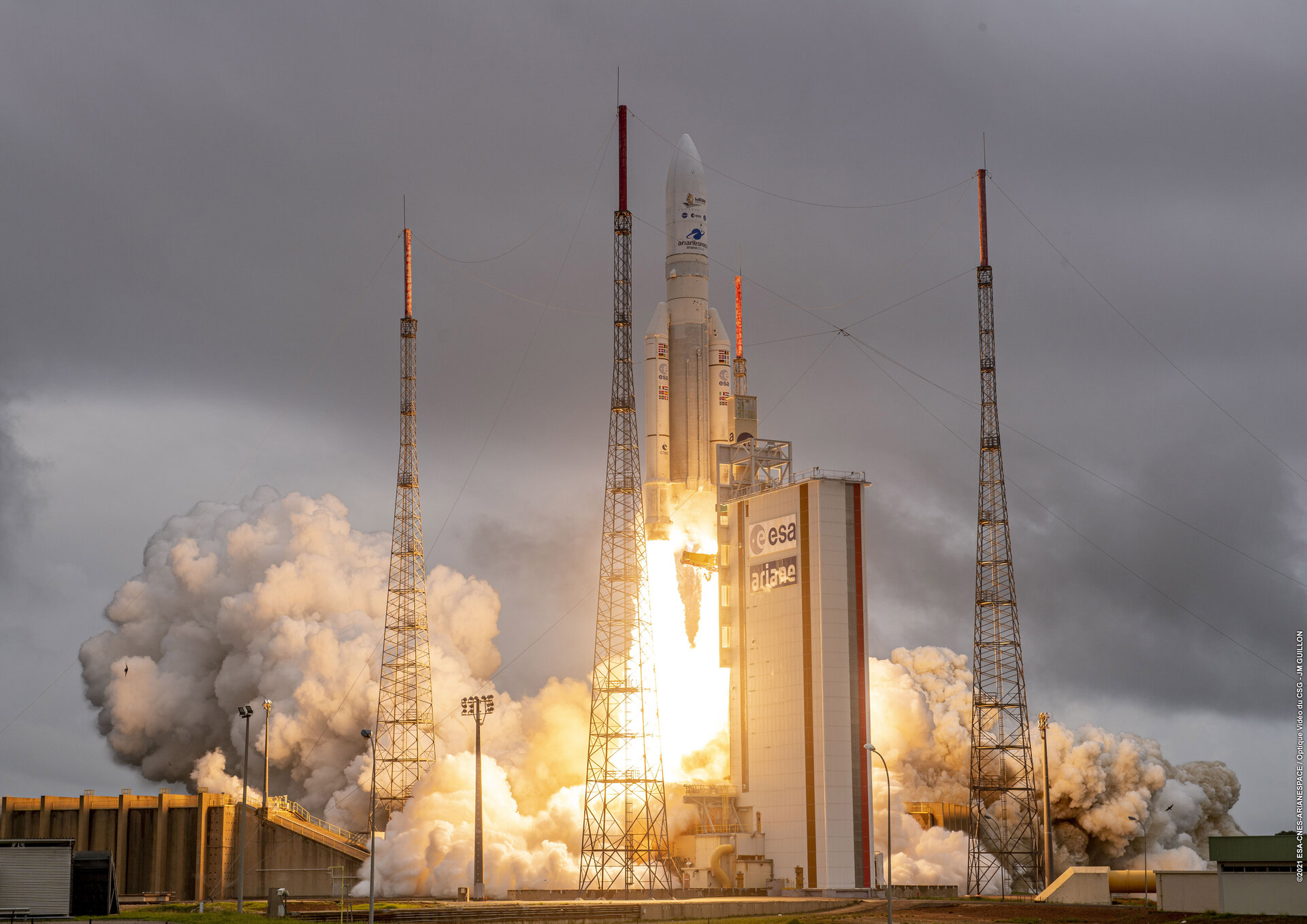Juice on final stretch for launch to Jupiter
ESA’s mission to explore Jupiter and its largest moons has safely arrived at Europe’s Spaceport in French Guiana, where final preparations for its April launch are now underway.
The Jupiter Icy Moons Explorer – better known as Juice – arrived on 8 February at Félix Eboué airport in Cayenne by a special Antonov Airlines An-124 cargo flight from Toulouse, France, where prime contractor Airbus completed a nearly decade-long process of concept, design, testing and construction. Now, the spacecraft will undergo final testing and inspection by engineers from ESA and Airbus before it is fueled up and mounted on its Ariane 5 rocket.
Launch, scheduled for 13 April, will open an eight-year voyage to Jupiter. Packing a suite of 10 instruments, Juice’s mission is to study Jupiter’s large, ocean-bearing icy moons. The objectives include learning how such worlds might harbour life and studying the Jupiter system as a model for complex environments around gas giant planets across the Universe.
Jupiter is more than five times farther from the Sun than is our Earth, so getting there is a major challenge. After launch, a series of gravity-assist flybys of Earth and Venus will give Juice the speed and direction it needs to fly beyond the asteroid belt and reach the largest planet in our Solar System.
Following its arrival at Jupiter in 2031, Juice will be guided through another 35 flybys of the gas giant’s moons to explore its principal objectives: Callisto, Europa and Ganymede. The mission will conclude with an extended study of Ganymede – in 2034 it will become the first spacecraft to orbit a moon other than Earth’s.
To fly such a complex path over an enormous distance – and, crucially, to get Juice’s data home – will be an extreme test of navigation techniques. Mission controllers at ESA’s European Space Operations Control Centre (ESOC) in Darmstadt, Germany will be reliant on the Estrack network of deep space antennas in Spain, Argentina and Australia.
Launch itself will bring to a close a long tradition of ESA science missions starting atop an Ariane 5 rocket, including Rosetta and BepiColombo. Most recently, Ariane 5 sent the James Webb space telescope to deep space (pictured below) for NASA, ESA and the Canadian Space Agency on Christmas Day 2021.
For the huge effort, though, the scientific promise is mesmerising. Scientists believe that Callisto, Europa and Ganymede hold vast quantities of water buried under their surfaces in volumes far greater than in Earth’s oceans. These planet-sized moons offer tantalising hints that conditions for life could exist beyond our home planet – perhaps on worlds orbiting giant planets instead of hot stars. Jupiter and its family of large moons represent an archetype for giant gas planet systems across the Universe, and as such are some of the most compelling destinations in our Solar System.
ESA and Juice ride the momentum of a long human fascination with the planet named for the God of Gods in the Roman pantheon. Large in the night sky, Jupiter was naturally a target for one of the first telescope-assisted stargazers, Galileo. His observations, from 1610, discovered Io, Europa, Callista and Ganymede, and showed them to move, relative to Jupiter, from night to night – suggesting the controversial notion that Earth was not the sole centre of motion in the Universe.
To mark this watershed moment in our understanding of the cosmos, Juice carries a plaque celebrating Galileo’s work.
This story has been updated to reflect the planned launch date as 13 April.















 Germany
Germany
 Austria
Austria
 Belgium
Belgium
 Denmark
Denmark
 Spain
Spain
 Estonia
Estonia
 Finland
Finland
 France
France
 Greece
Greece
 Hungary
Hungary
 Ireland
Ireland
 Italy
Italy
 Luxembourg
Luxembourg
 Norway
Norway
 The Netherlands
The Netherlands
 Poland
Poland
 Portugal
Portugal
 Czechia
Czechia
 Romania
Romania
 United Kingdom
United Kingdom
 Slovenia
Slovenia
 Sweden
Sweden
 Switzerland
Switzerland






























